
Toyota Aygo Hatchback (2005-2014) engines, drive and performance

- Economical petrol appeals
- Diesel is rare, best avoided
- Automatic exists, but is not reliable
The Toyota Aygo with 1.0-litre VVTi petrol engine is the only version we’d recommend going for. Early models have 68hp, later models were revised to lower the emissions. This made the 1.4-litre diesel redundant, so it was discontinued – it was slow, and it’s not ULEZ or clean air zone compliant which is something of a disadvantage for a used city car.
Fuel economy should be well over 50mpg regardless of gearbox or which era of Aygo you choose, and road tax (VED) is cheap. 2012-on models offer lower CO2 and better economy, meaning that while early models are already very cheap to tax, the last examples of the Aygo Mk1 qualify for free VED for the time being.
The standard five-speed manual gearbox has a light, accurate shift and the clutch pedal is also light to use, making this a great car for town driving.
What’s wrong with the Aygo Mk1 automatic?
Small automatic used cars are few and far between, so why is the Aygo automatic such a bad idea? It’s essentially the same five-speed gearbox that you get in the manual, but clutch and gear selection are automated. Toyota call it Multimode (MMT) but this is part of the collaboration that comes from the Peugeot/Citroen side of the partnership, and you may have come across it before as SensoDrive or EGS.
It can be driven like a manual with the driver changing gear, or left in full automatic mode. Changes are slow, as the clutch is operated by a motor attached to the gearbox (at higher mileages the clutch wears and the computer is supposed to compensate – owners assume automatics work forever, and the computers get forgetful, particularly if the clutch servo encounters a fault and has to be reset). It can be problematic as the cars age, and when it goes wrong can leave the car unable to move despite the conventional nature of the gearbox itself.
It’s sensitive to battery condition and not all mechanics have the diagnostic equipment to calibrate or fix it. However, when it is in good health and properly calibrated it’s an economical auto option. If you’re viewing an Aygo Mk1 MMT for sale, on the test drive make sure it doesn’t jolt or shake when pulling away, particularly on hill starts.
If you can find a specialist mechanic to look after it for you the MMT can be made reliable – the costs are comparable to a conventional system, just distributed differently; for example, replacing a clutch servo shouldn’t cost more than a fluid flush and filter change on a traditional automatic and replacing the clutch itself is not that different to one on a manual car.
Toyota Aygo Mk1 handling
- Wheel at each corner and wide track
- A planted, secure stance that’s great on open roads
- Light steering is more suited to city streets, however
Short overhangs with all four-wheels pushed to the corners, plus the widest stance of any car in its class help the Aygo maintain composure on challenging roads with seemingly little effort.
The Aygo will zip around fast bends with minimal body roll and high levels of grip, although the steering can feel rather inert when pressing on – but while it may lack feedback, it’s still responsive and precise.
However the little Toyota’s natural environment is the town and here the light steering is ideal, making it simple to dart into small spaces and easy to park.


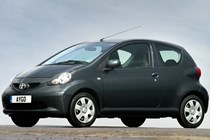
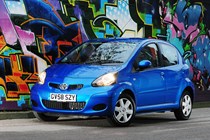
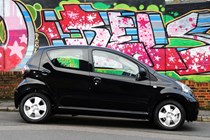

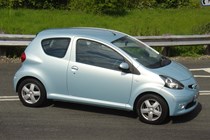


.jpg)
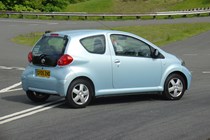
.jpg)
.jpg)
.jpg)
.jpg)
.jpg)
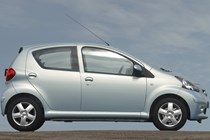
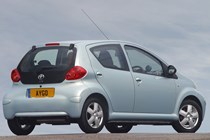

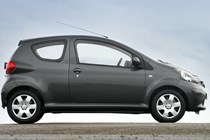
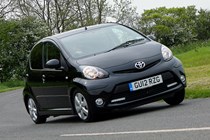



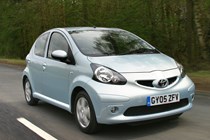
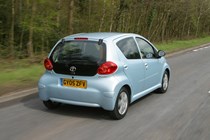

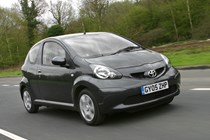
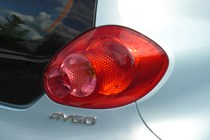


.jpg)

.jpg)
.jpg)
.jpg)
.jpg)
.jpg)
.jpg)
.jpg)
.jpg)
.jpg)
.jpg)
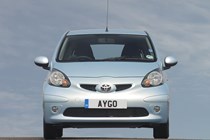




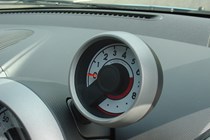
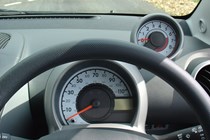
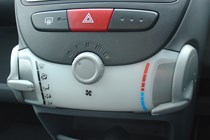

.jpg)
.jpg)
.jpg)
.jpg)
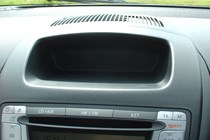
.jpg)
.jpg)
.jpg)
.jpg)
.jpg)

.jpg)
.jpg)
.jpg)
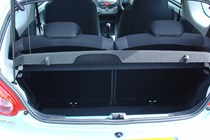
.jpg)
.jpg)
.jpg)
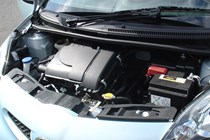
.jpg)
.jpg)
.jpg)
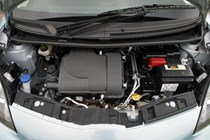







.jpg?quality=50)

.jpg?quality=50)
.jpg?quality=50)
.jpg?quality=50)
.jpg?quality=50)
.jpg?quality=50)















.jpg?quality=50)

.jpg?quality=50)
.jpg?quality=50)
.jpg?quality=50)
.jpg?quality=50)
.jpg?quality=50)
.jpg?quality=50)
.jpg?quality=50)
.jpg?quality=50)
.jpg?quality=50)
.jpg?quality=50)









.jpg?quality=50)
.jpg?quality=50)
.jpg?quality=50)
.jpg?quality=50)

.jpg?quality=50)
.jpg?quality=50)
.jpg?quality=50)
.jpg?quality=50)
.jpg?quality=50)

.jpg?quality=50)
.jpg?quality=50)
.jpg?quality=50)

.jpg?quality=50)
.jpg?quality=50)
.jpg?quality=50)

.jpg?quality=50)
.jpg?quality=50)
.jpg?quality=50)
